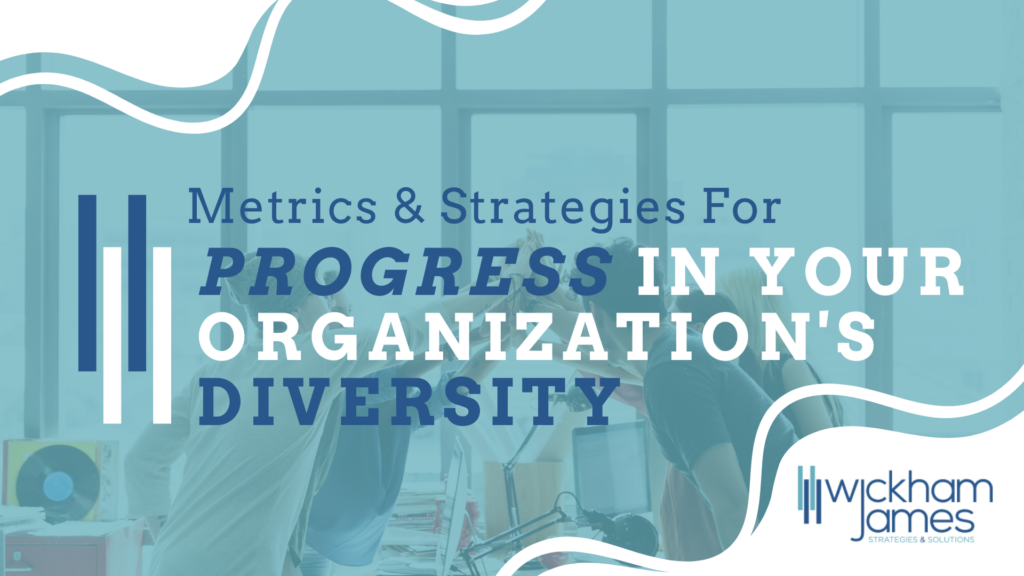 Without clear goals and strategies, it becomes easy for an organization to fall back into old habits. This goes the same for diversity and inclusion in the workplace. It is easy to assume that your organization is inclusive and equal across all departments and processes, but there is no way to know for sure when metrics are not measured.
Without clear goals and strategies, it becomes easy for an organization to fall back into old habits. This goes the same for diversity and inclusion in the workplace. It is easy to assume that your organization is inclusive and equal across all departments and processes, but there is no way to know for sure when metrics are not measured.
Metrics and strategies ensure that employers are devoted to improving diversity and inclusion, finding blind spots and areas of improvement to work through and change. As you find these opportunities and improve on them, you can work toward growing employee trust, satisfaction, growth, and retention.
What DEI Metrics Should You Be Using?
There are many metrics to consider when trying to improve diversity and inclusion in your organization. Here are some to work into your efforts.
Retention and Turnover Rates
Mulling over your retention rates can help illuminate possible retention issues with certain groups or individuals. You can do this based on generation, age, or race and determine how many employees you currently have compared to how many employees have left in that category. Then, while retention rates show you how many people have stayed, you can look to turnover rates to see how many people have left. To do this, you can categorize once again and compare the number of employees at the beginning of a period and how many there are now.
Demographics Across Multiple Levels
While your company may be diverse throughout the employee level, there are other metrics you should look for. You want to look at the diversity going up the ladder to executives, department heads, managers, and partners. You can look at these in categories as well, looking at women, LGBTQ, disabled, African American, Asian, and other minorities. You will want to compare how many of those people you have in total and put that side by side with how many of them have higher-level titles.
Candidate Demographics
Diversity and inclusion start with applications. You will want to observe those who apply for positions, get to the interview process, and who is hired. This will show you if your positions are even reaching out to diverse communities or if you are only focusing on one group of people. From there, you can compare who you interview and hire, seeing if the ratios are equal or skewed in some way. This might change the way you advertise your jobs and appeal to diverse groups of people.
Equal Pay
Assessing pay disparities can help uncover issues within your pay practices throughout your organization. You want to look for pay differences within the same working titles. From there, you can assess pay between different demographics and people and find any gaps that need clarification. Unequal pay can also be seen in bonuses and raises. It could be seen as an issue if they are only given to some but not others of equal working titles and attributes.
Strategies To Implement Within Your Organization
When you decide to implement strategies within your organization, they should be made with the goal of better representation, retention, recruitment, development, and employee engagement. There are many ways to do this, but here are just a few.
Define the Problems You Want to Solve
You can waste a lot of time and energy working to address issues in your organization that don’t need addressing. If you pull metrics and prioritize areas that are already where they need to be, then you could be missing the opportunity to progress in other areas. Depending on the goals, you might want to focus your strategies on ethnicity, race, tenure, health status, employment status, sexual orientation, faith, or immigration status.
Set Targets
Without targets, you will not know what you are aiming for. With a measurable goal in mind, you can work through the proper steps to get there and be able to view the progress made afterward. These goals need to be ambitious enough to encourage the effort put into them but realistic enough to achieve.
Keep Responsibility and Accountability at The Forefront
Once goals are made, they must be assigned to those equipped to handle them. This is typically managers, HR, or higher-ups. Assigning them to one or multiple people can help keep track of progress and keep the goals accounted for.
Build a Scorecard
All of this information can be recorded and tracked on a scorecard. Typically a scorecard will include details on hiring, retaining, and promoting within specific categories. This scorecard can be reviewed monthly and updated by the one accountable, while data can be collected through employee surveys and meetings. A scorecard can help track and analyze the data.
Diversity and inclusion are something that all businesses should be prioritizing. If you have questions on how to implement strategies and goals such as these in your organization, contact the team at Wickham James.




